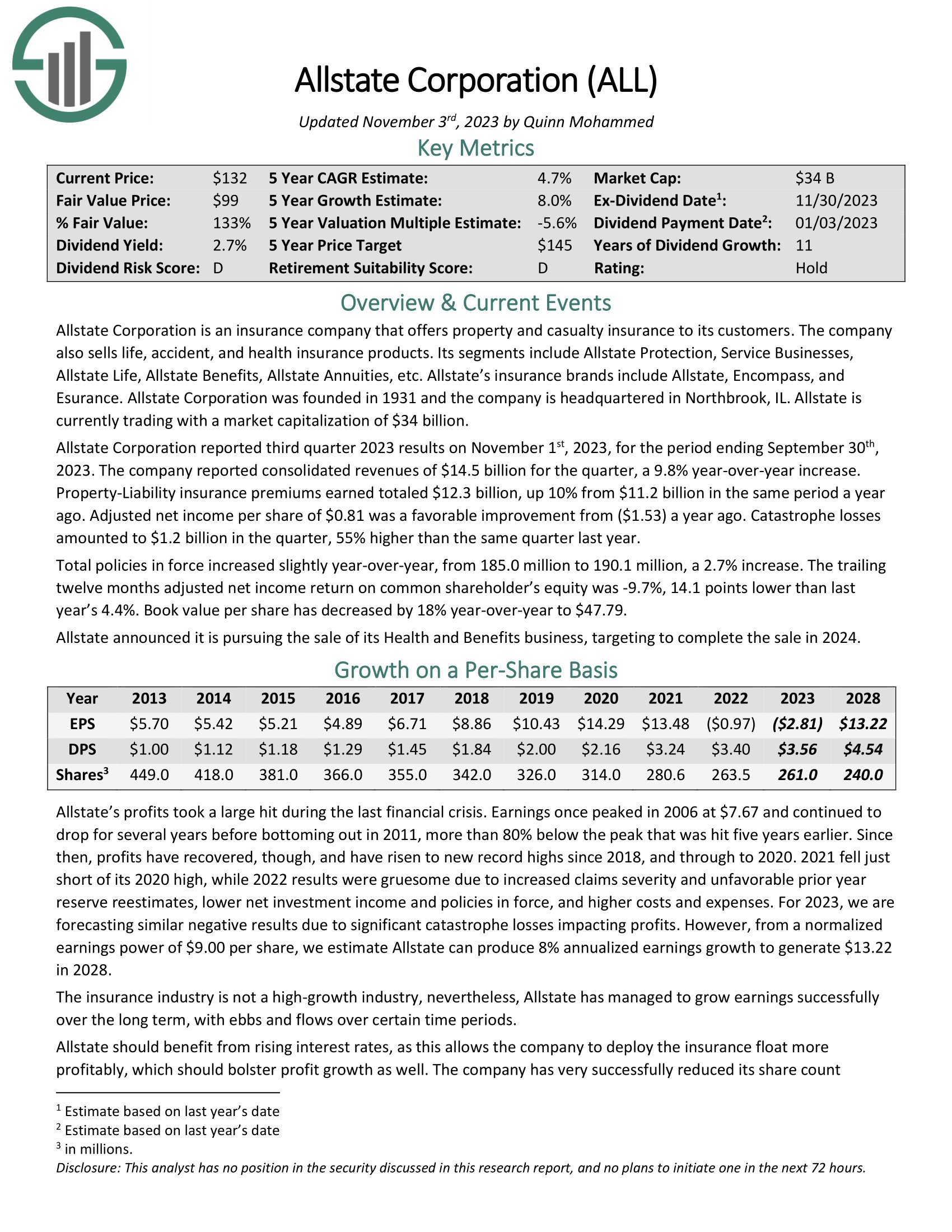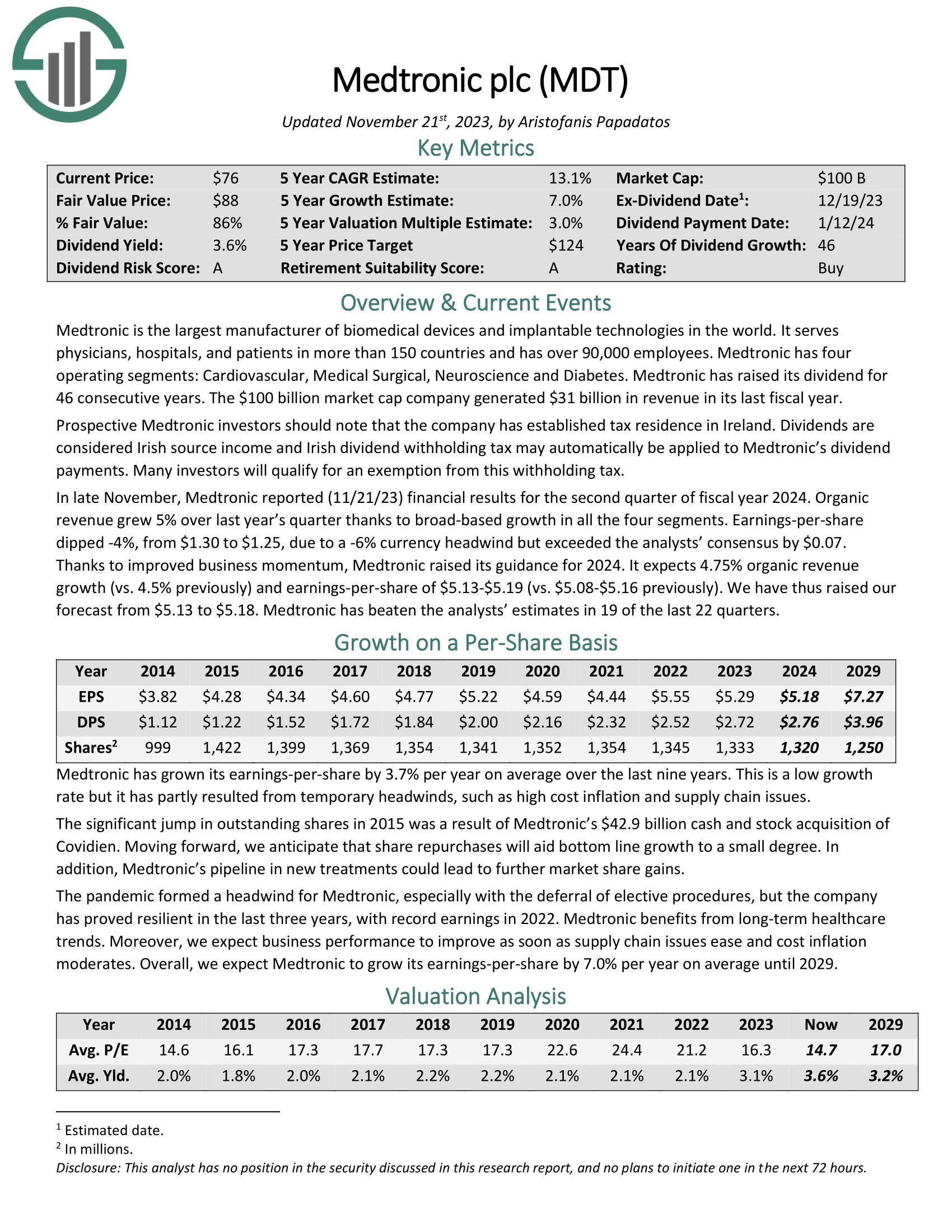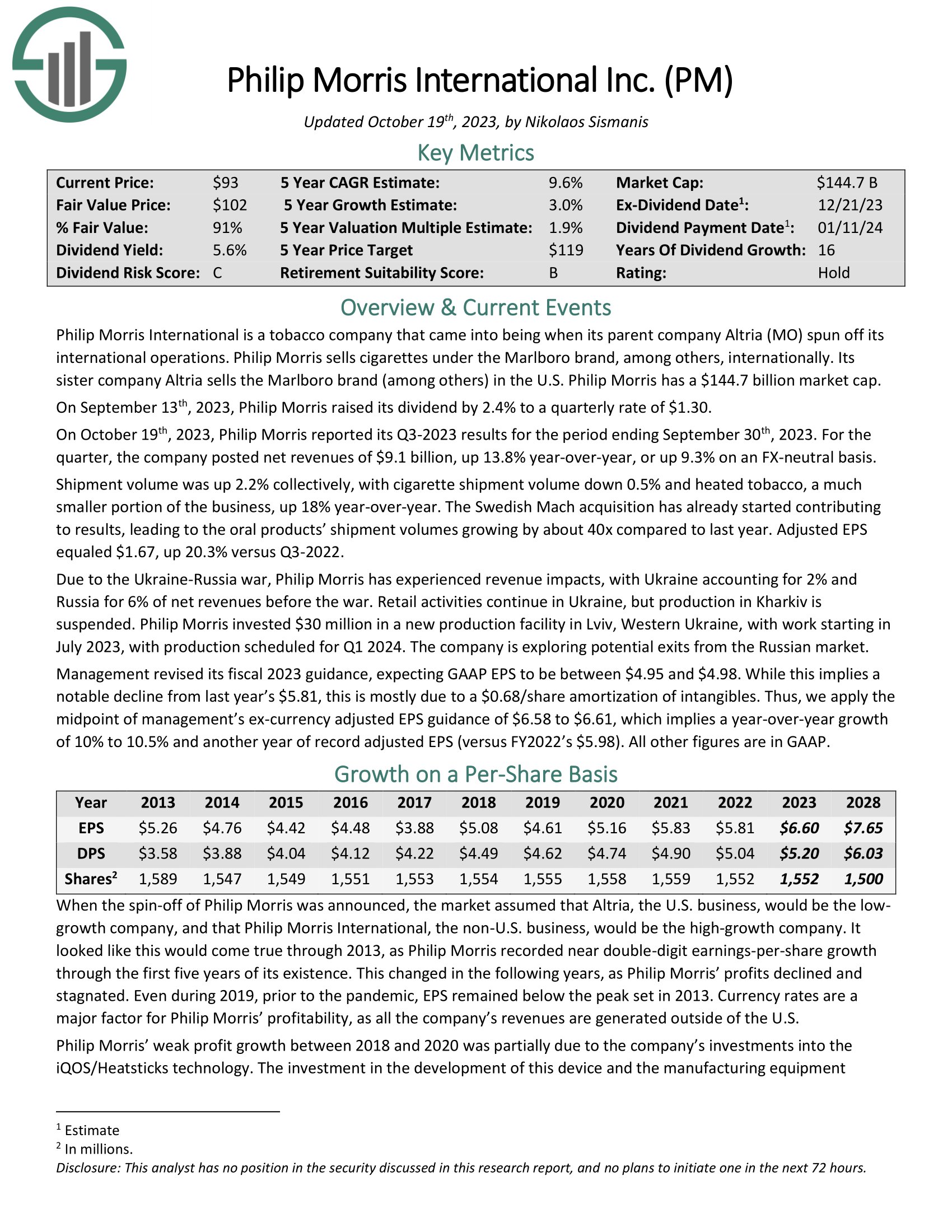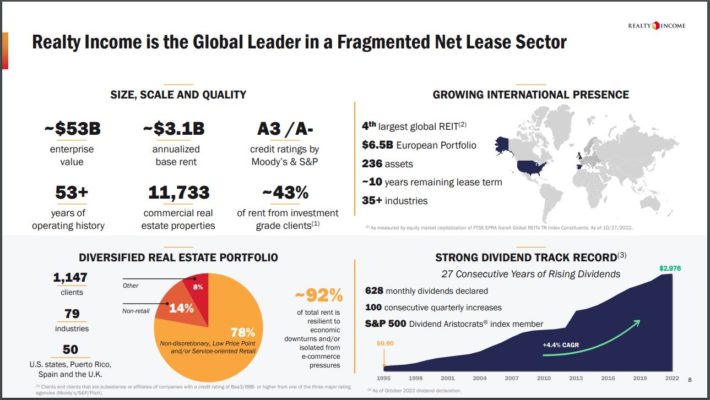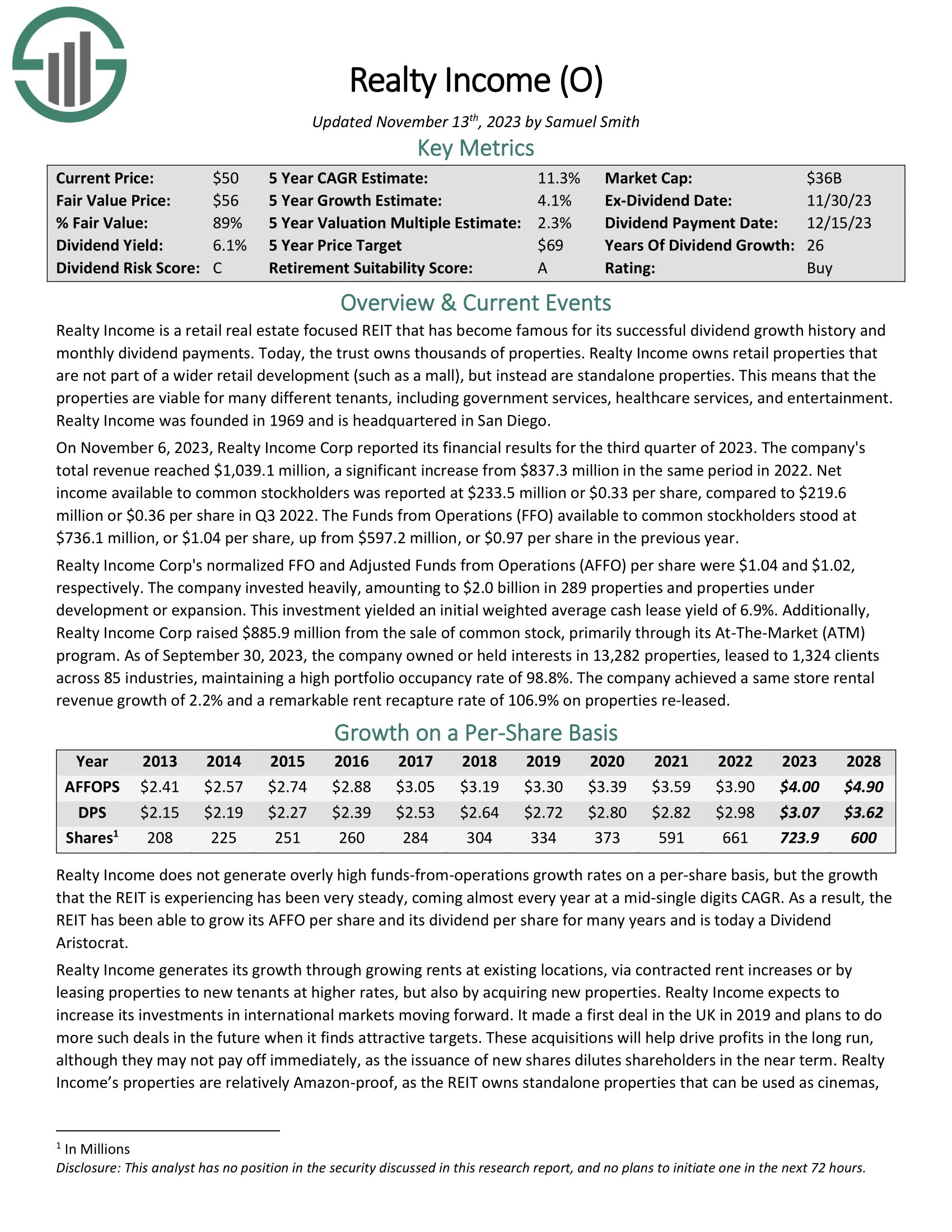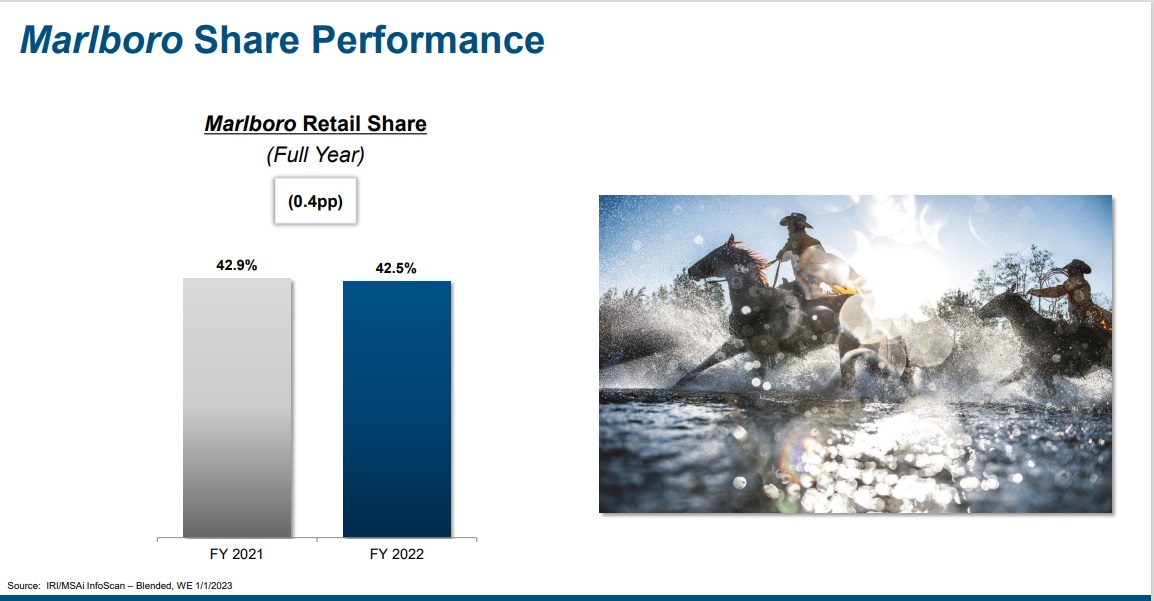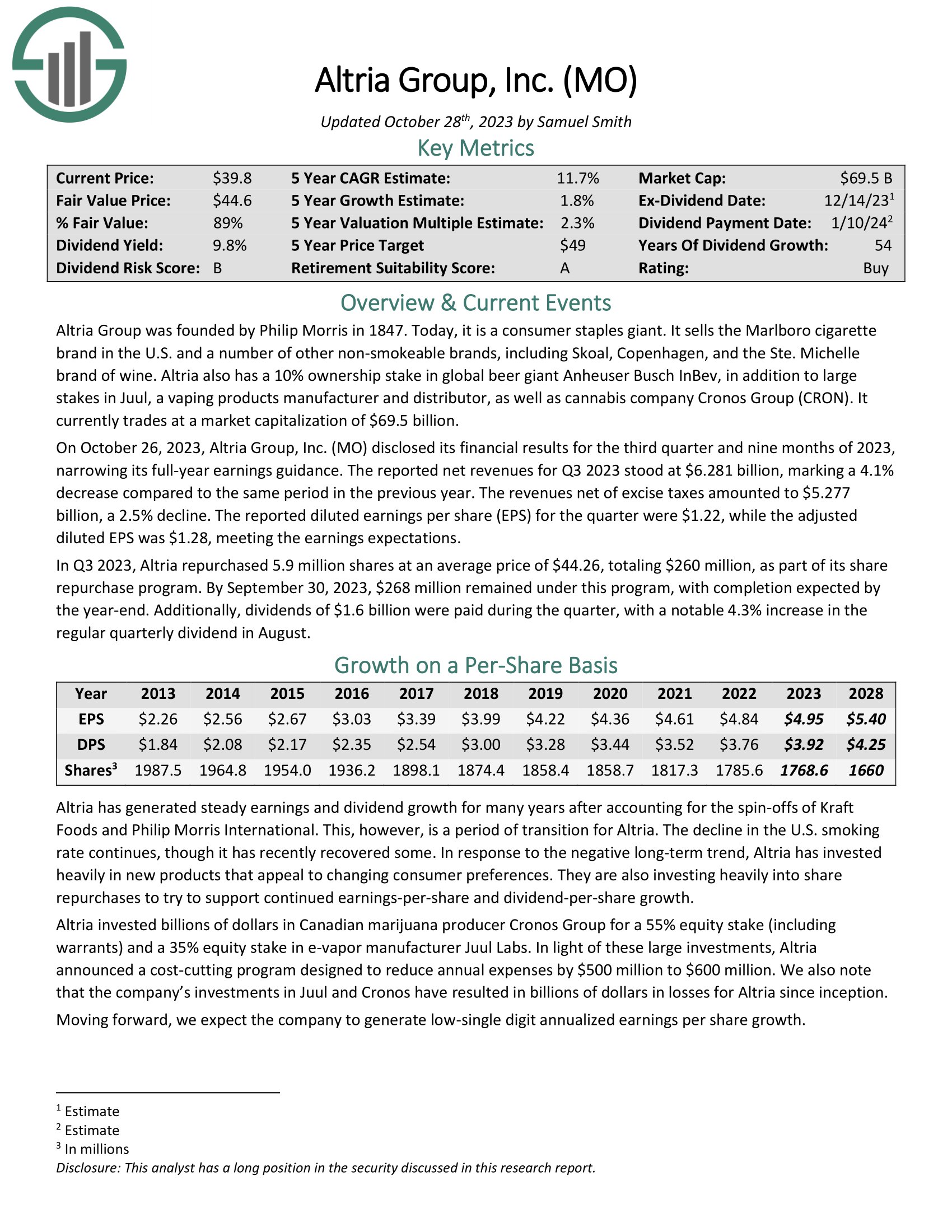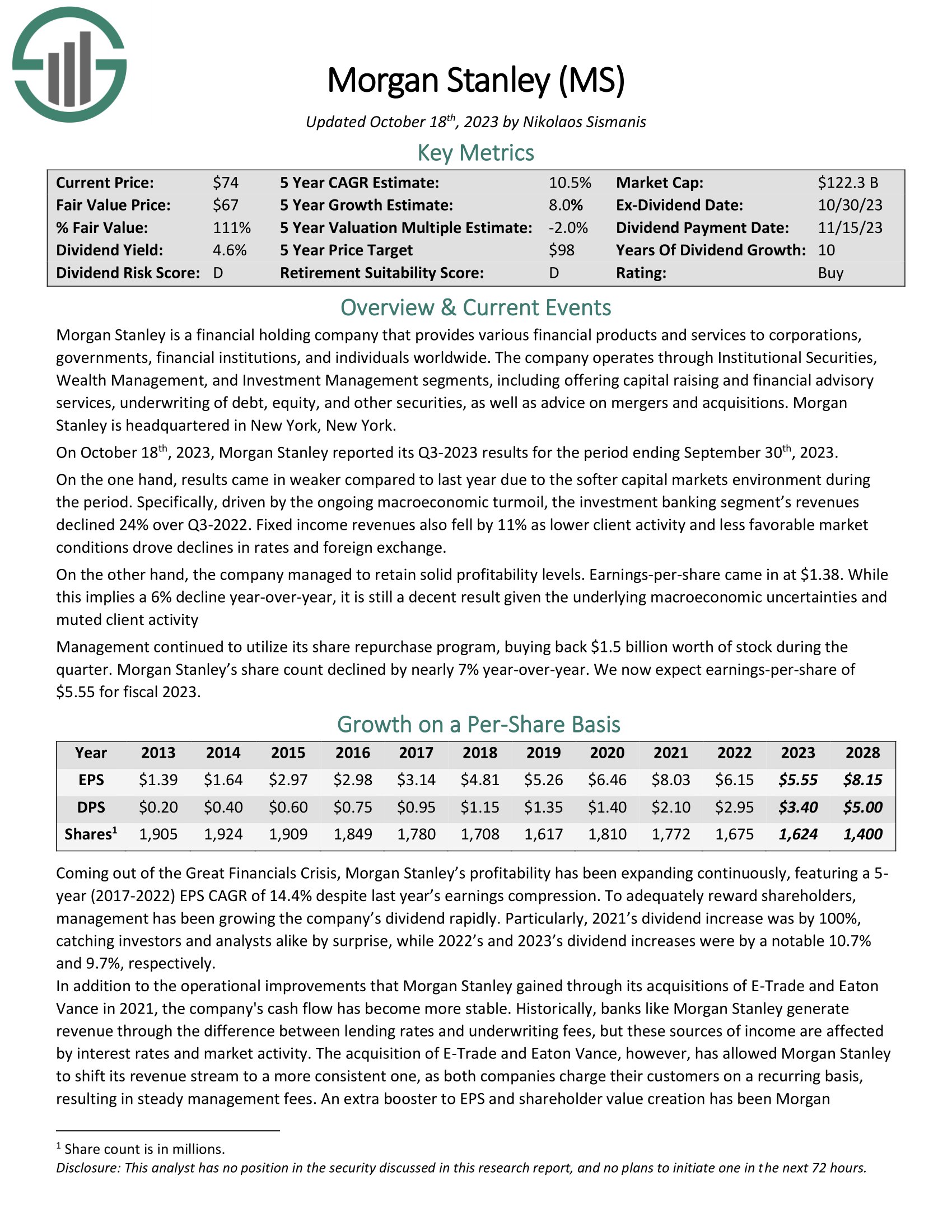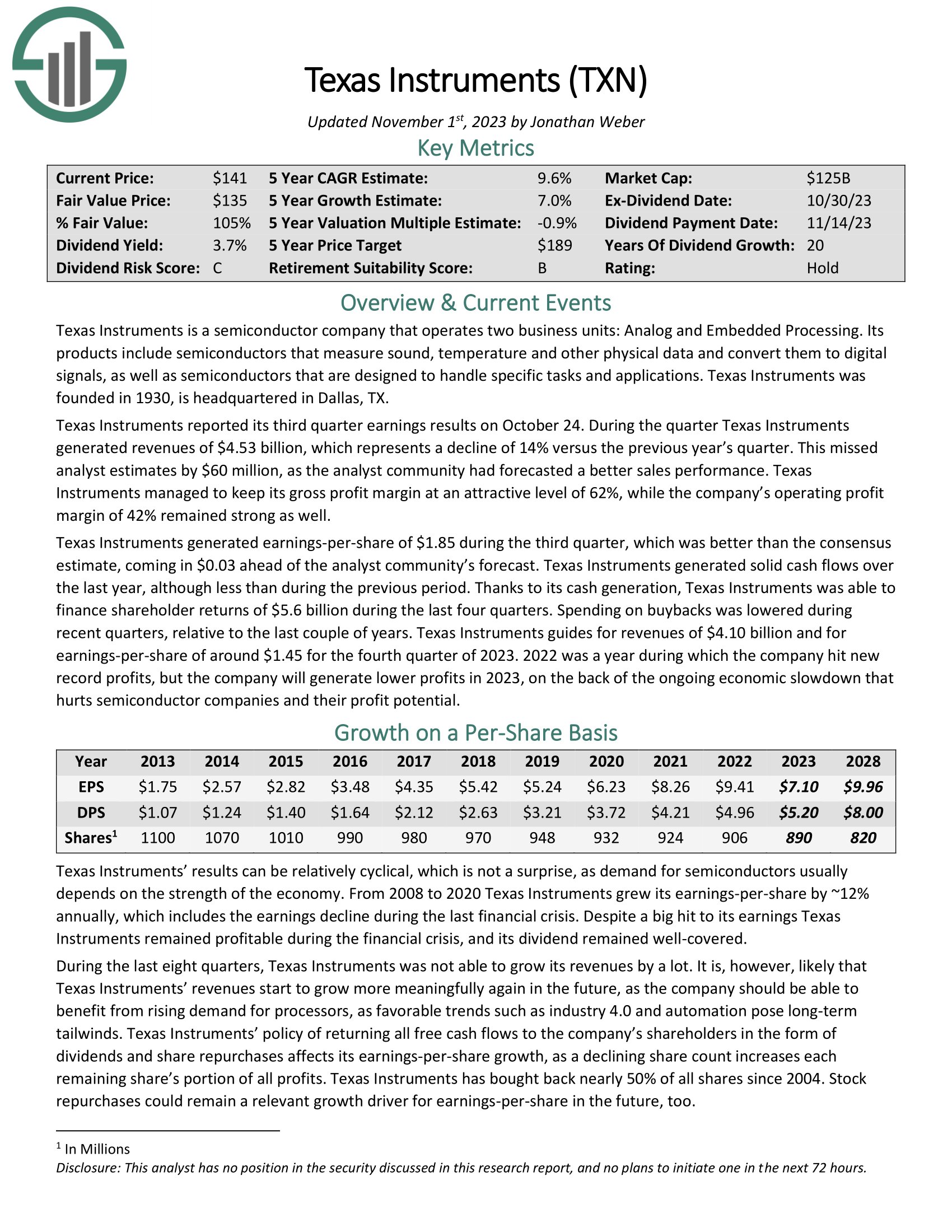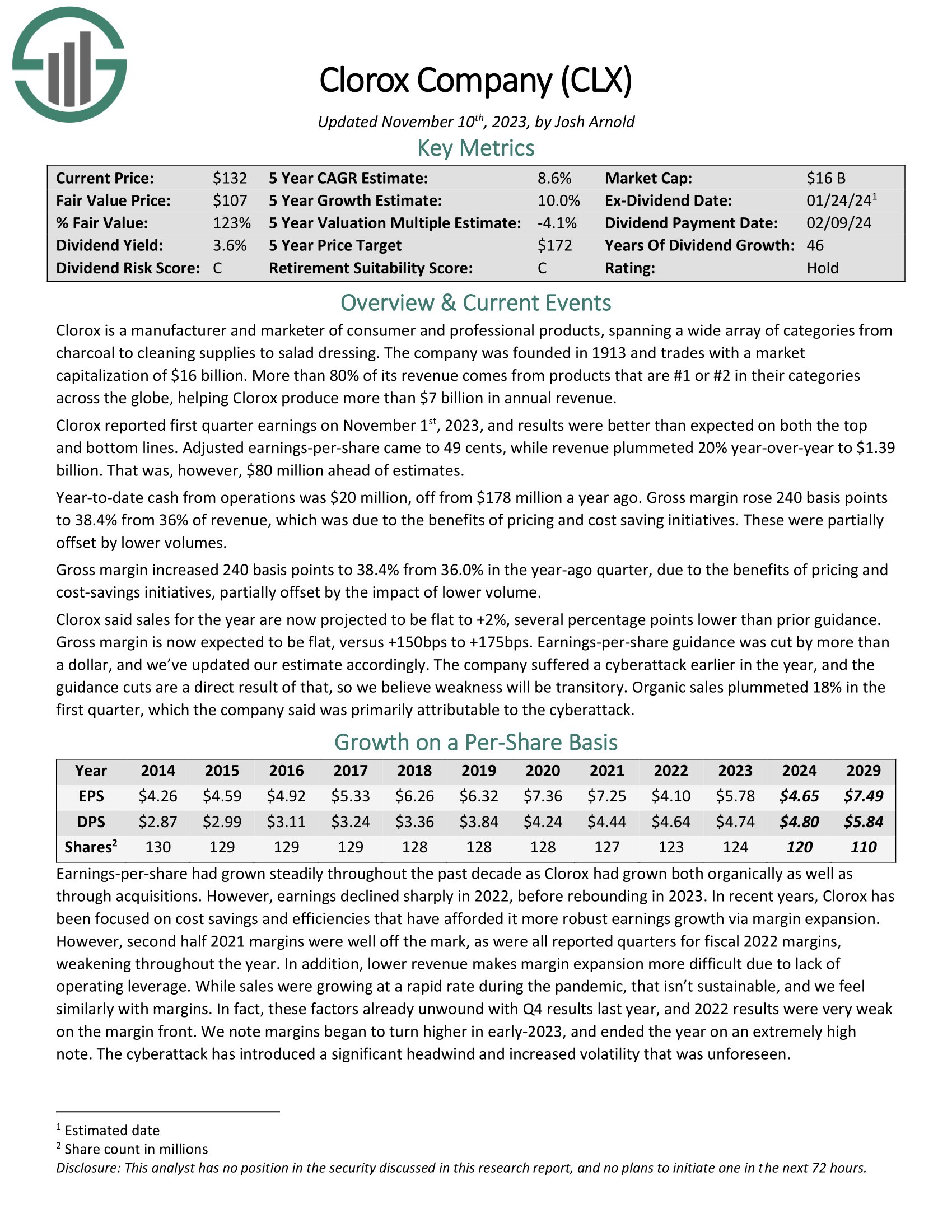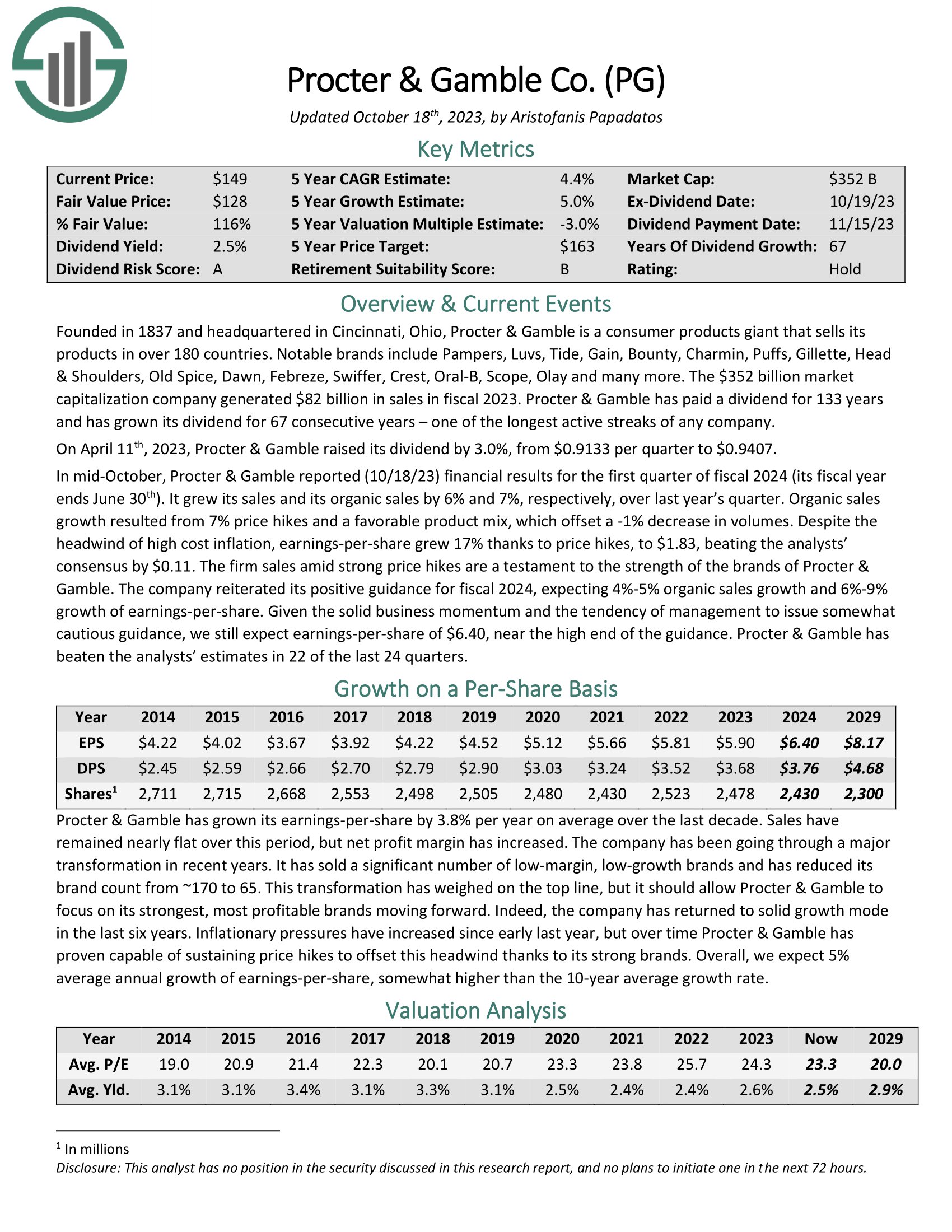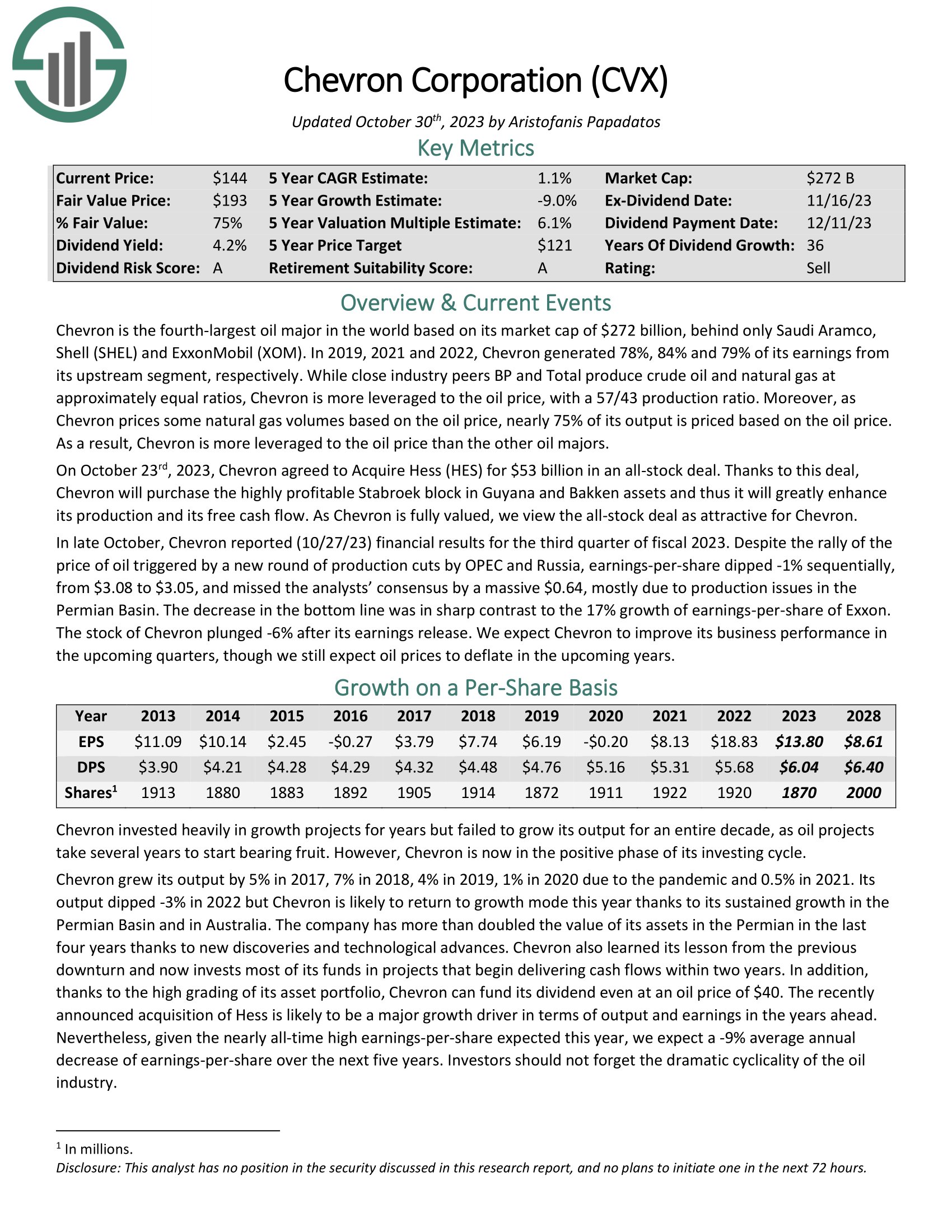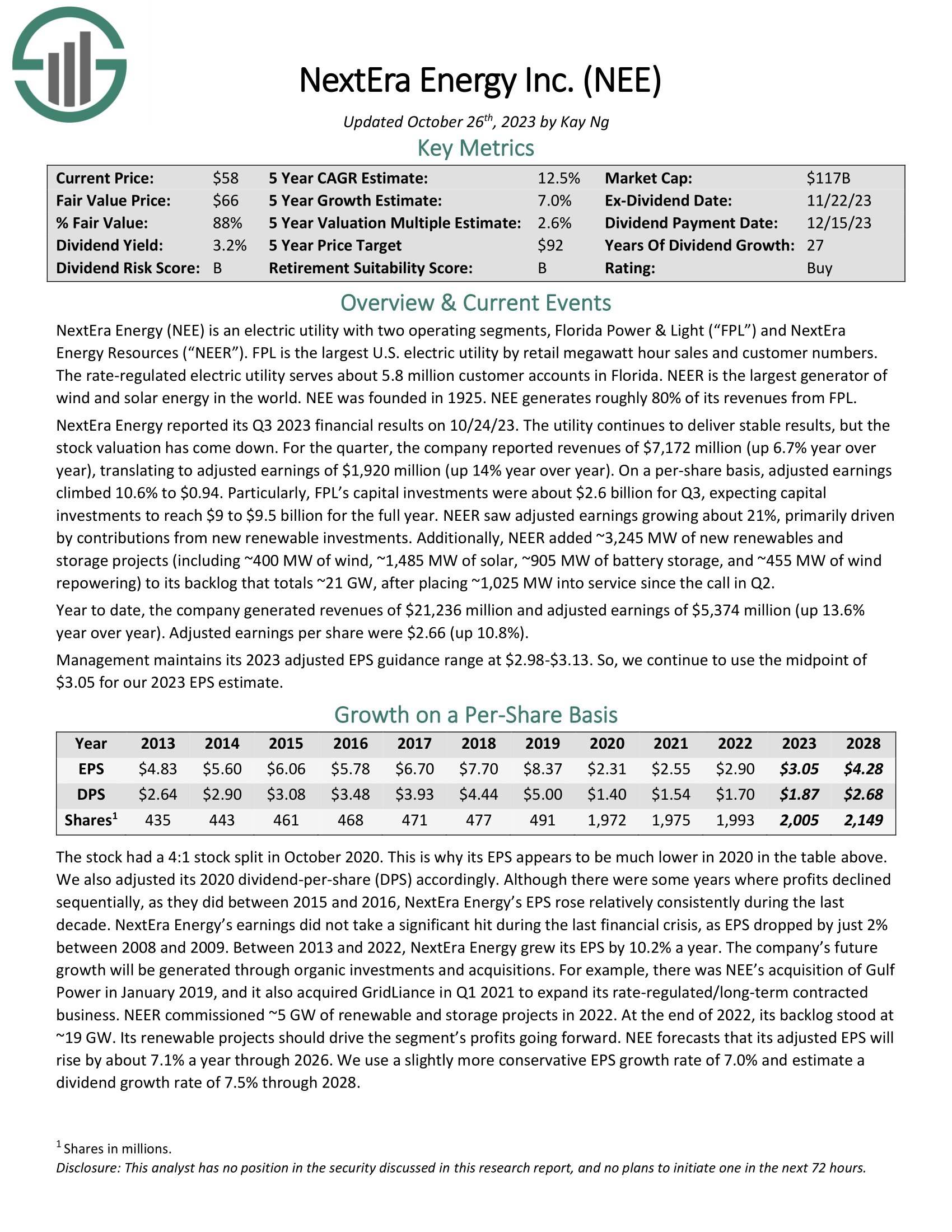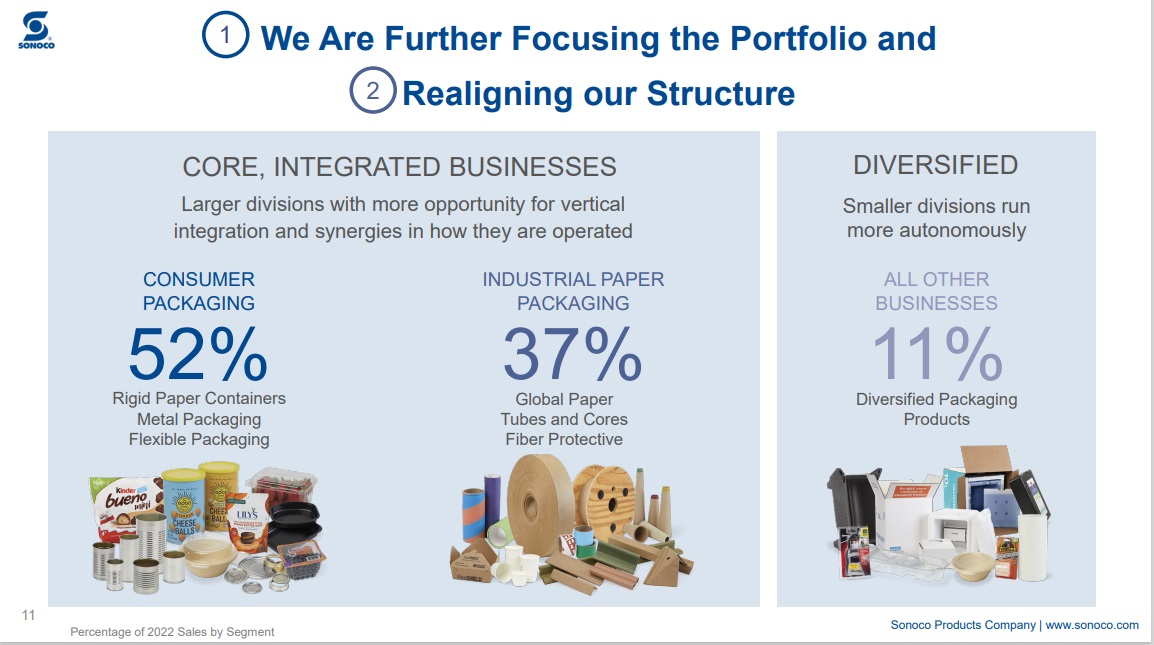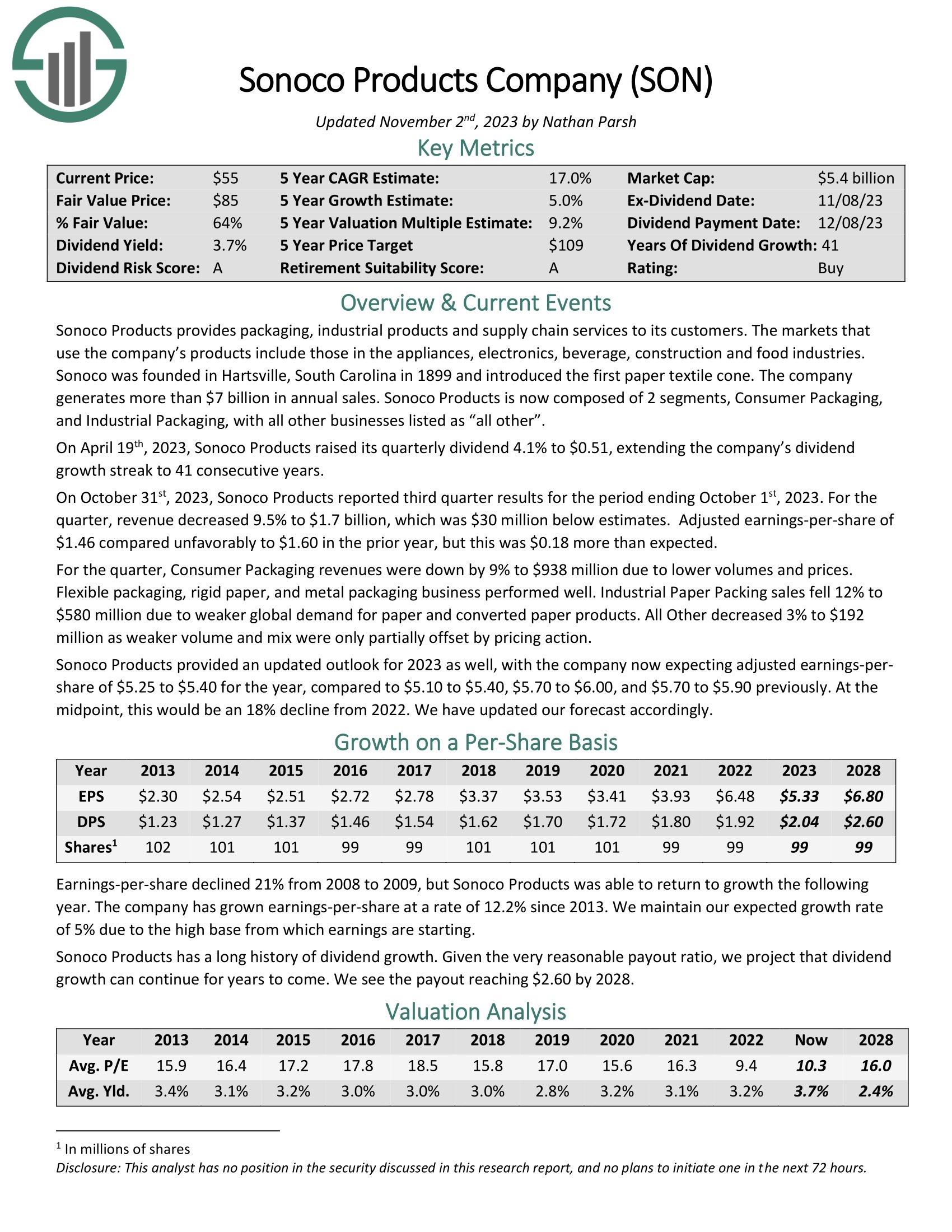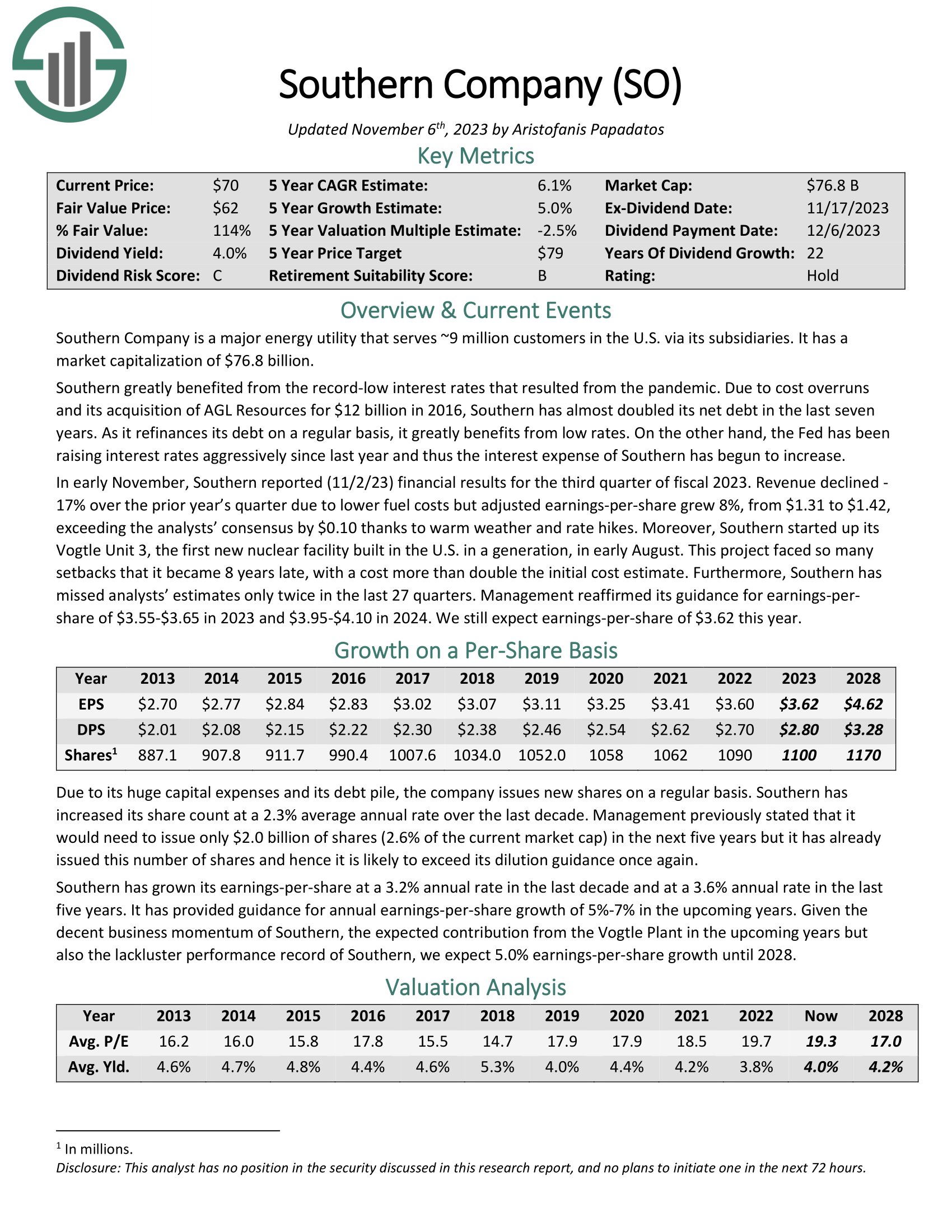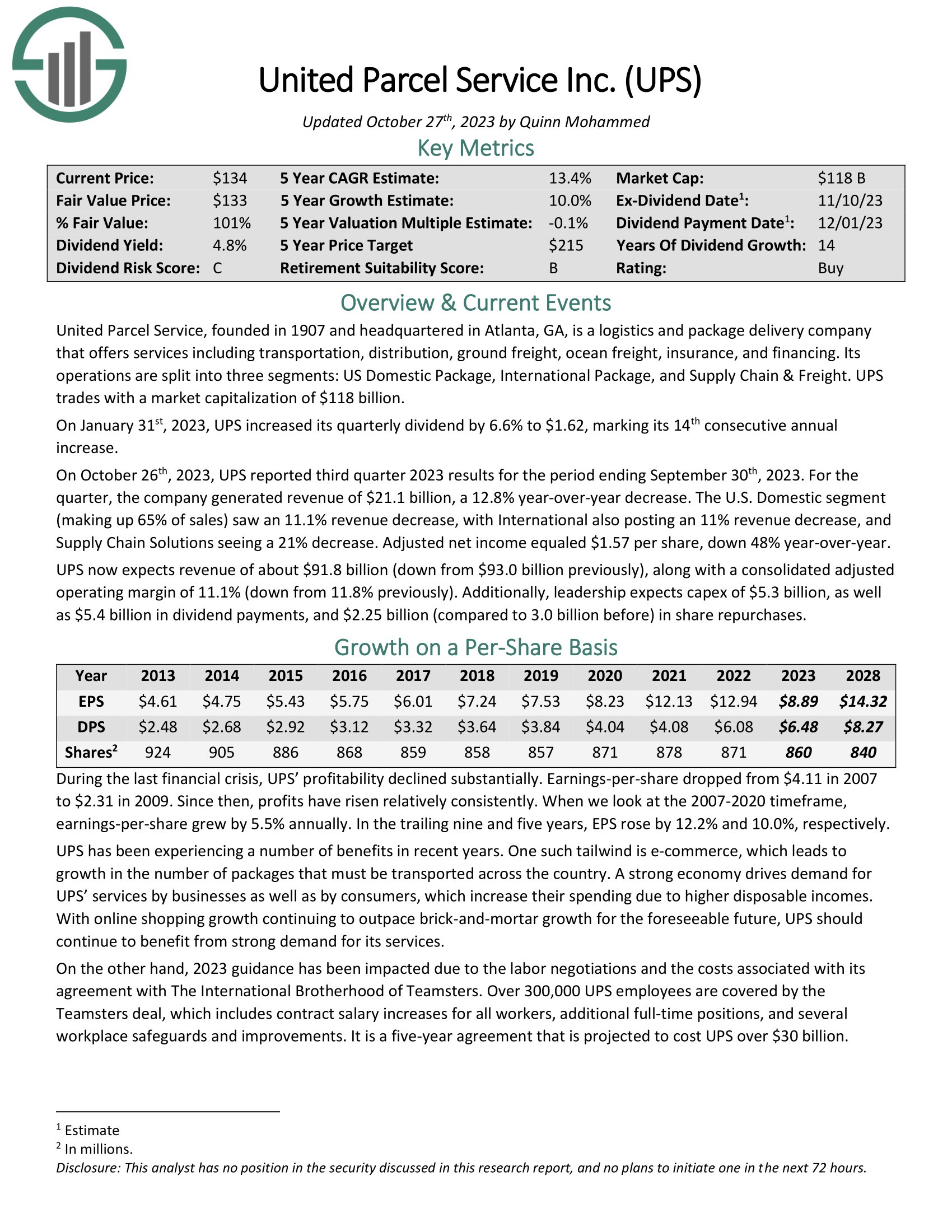Updated on December 27th, 2023
Many that follow the dividend growth investment strategy aim to live off the income their portfolio provides in retirement.
We believe that those that follow this strategy can have a more worry-free retirement experience as the investor’s portfolio can provide income regardless of the state of the economy.
This is why we believe that investors should focus on owning high-quality dividend-paying stocks such as the Dividend Aristocrats, which are those companies that have raised their dividends for at least 25 consecutive years.
Membership in this group is so exclusive that just 68 companies qualify as Dividend Aristocrat.
We have compiled a list of all 68 Dividend Aristocrats and relevant financial metrics like dividend yield and P/E ratios. You can download the full list of Dividend Aristocrats by clicking on the link below:
In a perfect world, investors would receive the same or similar amount of income from their portfolio every month as expenses are usually consistent.
But this is not the case as many companies typically distribute their dividends at the end of each quarter, which is usually in March, June, September, and December. This can make for uneven cash flows throughout the year, which presents some issues for investors that require similar income month-to-month.
Still, investors can construct a diversified portfolio with high-quality, dividend-paying stocks that can provide similar amounts of income every month of the year.
To that end, we have created a model portfolio of 15 stocks. Each stock has at least nine years of dividend growth, with the average position having a dividend growth streak of 30 years.
Stocks were selected from various sectors, giving the investor a diversified portfolio that would provide income each month of the year. The portfolio has a yield of 4.0%, more than double the average yield of the S&P 500 Index.
January, April, July, and October Payments
Allstate Corporation (ALL)
In business since 1931, Allstate provides property and casualty to its customers, along with an accident, life, and health insurance products. The company’s largest segments include Allstate Protection, Service Businesses, Allstate Life, and Allstate Benefits. Top brands include Allstate, Encompass, and Esurance. The company has more than 185 million total policies in place as of the most recent quarter.
Allstate has raised its dividend for ten consecutive years and has a five-year compound annual growth rate (CAGR) of more than 16%. We do note that growth will likely slow as the company is expected to see a slowdown in net income this year due to increased claims and severity and unfavorable prior year reserve reestimated. However, the stock’s 2.4% dividend yield is likely safe, given our projected payout ratio is 62% when using our earnings power estimate.
Click here to download our most recent Sure Analysis report on Allstate Corporation (ALL) (preview of page 1 of 3 shown below):
Medtronic plc (MDT)
Medtronic, which has operations in more than 150 countries, is the world’s largest manufacturer of biomedical devices and implantable technologies. The company consists of segments, including Cardiovascular, Medical Surgical, Neuroscience, and Diabetes.
Aging worldwide demographics should provide a tailwind to the company’s business as increased access to healthcare products and services becomes more necessary. There are nearly 70 million Baby Boomers in the U.S. alone that will need increasing amounts of medical care as they age.
With a dividend growth streak of 45 consecutive years, Medtronic is a member of the Dividend Aristocrats. The company nearly qualifies as a Dividend King, which is a name with at least 50 consecutive years of dividend growth.
Medtronic’s dividend has a five-year CAGR of 8.2%, a yield of 3.4%, and a projected payout ratio of 52% for the fiscal year 2023.
Click here to download our most recent Sure Analysis report on Medtronic plc (MDT) (preview of page 1 of 3 shown below):
Philip Morris International (PM)
After being spun off from parent company Altria Group (MO) in 2008, Philip Morris is one of the largest international marketers of tobacco products. The company offers many products, but Marlboro is its most well-known brand.
Tobacco usage is falling in the U.S., but Philip Morris is not exposed to this market after separating from its parent company. The company is experiencing some headwinds, namely the ongoing war between Ukraine and Russia, with the two markets combining for 8% of net revenues in 2021. Currency exchange has also been an issue, as all of the company’s revenues are sourced in currencies other than the U.S. dollar.
That said, Philip Morris has raised its dividend for 16 consecutive years and for more than 50 years when including the time the company was part of Altria. Shares yield 5.5%, which helps to compensate for the low growth rate of just 2.8% over the last five years.
Click here to download our most recent Sure Analysis report on Philip Morris International (PM) (preview of page 1 of 3 shown below):
Realty Income (O)
Realty Income is a real estate investment trust, or REIT, that operates more than 11,100 properties. The trust’s properties are standalone, which makes Realty Income’s locations appealing to a wide variety of tenants, including government services, healthcare services, and entertainment.
Realty Income had long been focused primarily on the U.S., but the trust has recently expanded its operations internationally, with a presence now in both the U.K. and Spain. The trust’s tenants are spread out over more than 70 different industries. Realty Income has also strengthened its portfolio by spinning off its office properties, which were among the weakest performers during the worst of the Covid-19 pandemic in late 2021.
Unlike most companies, Realty Income pays a monthly dividend, including more than 600 payments since going public in 1994.
Source: Investor Presentation
The dividend growth streak stands at 26 years. The last five years have seen dividend growth at a rate of 3% annually, but the stock yields a generous 4.7%. The projected payout ratio for the year is 76%, which should be considered safe for REIT.
Click here to download our most recent Sure Analysis report on Realty Income (O) (preview of page 1 of 3 shown below):
Altria Group (MO)
Altria Group was founded by Philip Morris in 1847 and today has grown into a consumer staples giant. While it is primarily known for its tobacco products, it is significantly involved in the beer business due to its 10% stake in global beer giant Anheuser-Busch InBev.
Related: The Best Tobacco Stocks Now, Ranked In Order
The Marlboro brand holds over 42% retail market share in the U.S.
On October 26, 2023, Altria Group, Inc. (MO) disclosed its financial results for the third quarter and nine months of 2023, narrowing its full-year earnings guidance. The reported net revenues for Q3 2023 stood at $6.281 billion, marking a 4.1% decrease compared to the same period in the previous year.
The revenues net of excise taxes amounted to $5.277 billion, a 2.5% decline. The reported diluted earnings per share (EPS) for the quarter were $1.22, while the adjusted diluted EPS was $1.28, meeting the earnings expectations.
MO stock yields 9.7%.
Click here to download our most recent Sure Analysis report on Altria (preview of page 1 of 3 shown below):
February, May, August, and November Payments
AbbVie (ABBV)
Following being spun off from parent company Abbott Laboratories (ABT) in early 2013, AbbVie has become one of the largest biotechnology companies in the world. The company’s portfolio treats ailments in the areas of immunology, oncology, and virology.
Many investors know the company for Humira, which was once the best-selling drug globally, but this product has lost most of its patent protection. Revenues from Humira will nearly disappear by the middle of this decade.
AbbVie does have other promising drugs, including Skyrizi and Rinvoq, that are expected to contribute meaningfully to top-line results. The addition of Allergan in 2020 has helped diversify the company’s product offerings.
AbbVie reported its third quarter earnings results on October 27. The company was able to generate revenues of $13.9 billion during the quarter, which was 6% less than AbbVie’s revenues during the previous year’s quarter. AbbVie generated revenues that were ahead of what the analyst community had forecasted.
AbbVie’s revenues were positively impacted by compelling growth from some of its newer drugs, including Skyrizi and Rinvoq, while Humira sales declined due to the patent expiration, which hurt AbbVie’s revenues meaningfully. ABBV stock yields 4.0%.
Click here to download our most recent Sure Analysis report on AbbVie (preview of page 1 of 3 shown below):
Morgan Stanley (MS)
Morgan Stanley is a financial holding company that provides various financial products and services to corporations, financial institutions, governments, and individuals around the world. The company’s business segments include Institutional Securities, Wealth Management, and Investment Management.
Morgan Stanley has used acquisitions, such as E-Trade in 2020 and Eaton Vance in 2021, that has further cemented the company’s leadership position. Rising interest rates have also had a material benefit on net interest income.
As a result, Morgan Stanley has provided dividend increases for 10 consecutive years, with a yield of 3.6%.
Click here to download our most recent Sure Analysis report on Morgan Stanley (MS) (preview of page 1 of 3 shown below):
Texas Instruments (TXN)
Texas Instruments is a semiconductor company that operates two units: Analog and Embedded Processing. The company’s product portfolio includes semiconductors that measure sound, temperature, and other physical data and then convert them to digital signals. The semiconductors can be designed to handle specific tasks and applications.
Long-term, Texas Instruments benefits from very favorable tailwinds. First, the patent list is extensive, at more than 40,000. The company also has a product portfolio of over 100,000 and looks poised to benefit from the demand for semiconductors in multiple areas, such as automation.
This should provide shareholders with ongoing dividend increases, which Texas Instruments has done for 20 consecutive years. The payout is healthy, and shares yield 3.0%.
Click here to download our most recent Sure Analysis report on Texas Instruments (TXN) (preview of page 1 of 3 shown below):
Clorox Company (CLX)
Clorox is a leading manufacturer and marketer of consumer and professional products. The company has a wide variety of products, including cleaning supplies and food.
The company is so ingrained in its industry that it holds the number one or number two position in several categories, which derives the bulk of revenue for Clorox. Many of these products are staples for consumers, which helps to keep the business from suffering during a recession.
Clorox did very well during the worst of the Covid-19 pandemic as consumers stocked up on cleaning supplies and ate more meals at home. This demand has since normalized, which has caused the company to issue weak guidance for the year.
Still, we consider Clorox to be a very defensive company and expect the payout ratio to moderate in the coming years. The company has an extensive dividend growth streak of 46 years. The dividend has increased more than 8% annually over the past five years. The stock offers a yield of 3.4%.
Click here to download our most recent Sure Analysis report on Clorox Company (CLX) (preview of page 1 of 3 shown below):
Procter & Gamble Co. (PG)
Procter & Gamble is a consumer staple giant in its own right. The company has been in business since the 1830s and has built a stable of well-known brands, including Pampers, Charmin, Gillette, Old Spice, Oral-B, and Head & Shoulders.
Over the past few years, the company has been on an extensive thinning of its product lines, going from nearly 170 brands to just 65 core names. Revenue has declined as a result, but focusing on top brands with high margins has helped increase profitability.
A more focused product lineup will likely allow Procter & Gamble to continue growing its dividend, which the company has done for 67 consecutive years. Dividend growth has been decent over the medium term at 5.6% annually. Procter & Gamble yields 2.6%, and the forecasted payout ratio is near 60% for the fiscal year.
Click here to download our most recent Sure Analysis report on Procter & Gamble Co. (PG) (preview of page 1 of 3 shown below):
March, June, September, and December Payments
Chevron Corporation (CVX)
Chevron is one of the largest oil majors in the world. This gives the company a size and scale that many competitors aren’t able to match.
The company sees the bulk of its earnings from its upstream segment and has a higher crude oil and natural gas production ratio at 61/39 than most of its peers. Chevron also prices some natural gas volumes based on the oil price. In the end, the company is more leveraged to the oil price than the other oil majors.
In late October, Chevron reported (10/27/23) financial results for the third quarter of fiscal 2023. Despite the rally of the price of oil triggered by a new round of production cuts by OPEC and Russia, earnings-per-share dipped -1% sequentially, from $3.08 to $3.05, and missed the analysts’ consensus by a massive $0.64, mostly due to production issues in the Permian Basin.
CVX has increased its dividend for 36 consecutive years, and currently yields 4.0%.
Click here to download our most recent Sure Analysis report on Chevron Corporation (CVX) (preview of page 1 of 3 shown below):
NextEra Energy Inc. (NEE)
NextEra Energy is an electric utility with three operating segments: Florida Power & Light, NextEra Energy Resources, and Gulf Power. Florida Power & Light and Gulf Power are rate-regulated electric utilities with nearly six million customer accounts in Florida. These businesses require rate approvals to charge customers more, but regulators generally look favorably on utilities that invest in their infrastructure, as NextEra Energy has done. More than two-thirds of revenue comes from electric utilities.
NextEra Energy reported its Q3 2023 financial results on 10/24/23. The utility continues to deliver stable results, but the stock valuation has come down. For the quarter, the company reported revenues of $7,172 million (up 6.7% year over year), translating to adjusted earnings of $1,920 million (up 14% year over year). On a per-share basis, adjusted earnings climbed 10.6% to $0.94.
NEE stock yields 3.1%.
Click here to download our most recent Sure Analysis report on NEE (preview of page 1 of 3 shown below):
Sonoco Products Company (SON)
Sonoco Products provides its customer’s packaging, industrial products, and supply chain services. The company’s products are used in appliances, electronics, construction, and food and beverage containers. Sonoco Products operates two main segments: Consumer Packaging and Industrial Packaging.
The company generates more than $7 billion in annual sales.
Source: Investor Presentation
On October 31st, 2023, Sonoco Products reported third quarter results for the period ending October 1st, 2023. For the quarter, revenue decreased 9.5% to $1.7 billion, which was $30 million below estimates. Adjusted earnings-per-share of $1.46 compared unfavorably to $1.60 in the prior year, but this was $0.18 more than expected.
For the quarter, Consumer Packaging revenues were down by 9% to $938 million due to lower volumes and prices. Flexible packaging, rigid paper, and metal packaging business performed well. Industrial Paper Packing sales fell 12% to $580 million due to weaker global demand for paper and converted paper products. All Other decreased 3% to $192 million as weaker volume and mix were only partially offset by pricing action.
SON stock yields 3.6%.
Click here to download our most recent Sure Analysis report on Sonoco (SON) (preview of page 1 of 3 shown below):
Southern Company (SO)
Southern is one of the largest utility companies in the market, serving almost nine million customers in the U.S. As a regulated utility, the company benefits from limited competition and regularly receives approval for rate increases.
Southern has been in the process of building two nuclear plants, a process that delays and cost overruns have marked. However, both plants, which are the first nuclear units built in the U.S. in more than three decades, are expected to be operational in 2023. Upon completion, this will be the largest nuclear power station in the country.
Southern has raised its dividend for 22 consecutive years and yields 4.0%.
Click here to download our most recent Sure Analysis report on Southern Company (SO) (preview of page 1 of 3 shown below):
United Parcel Service Inc. (UPS)
United Parcel Service, or UPS, is a logistics and package delivery company that offers services such as transportation, distribution, ground freight, ocean freight, insurance, and financing. The company has three segments: U.S. Domestic Package, International Package, and Supply Chain & Freight.
The rise of e-commerce has led to an overall increase in demand for shipping and distribution, which has benefited UPS greatly as it is one of the most significant players in the industry. Online shopping also aided the company during the Covid-19 pandemic, as results were robust both during and after the period.
UPS has raised its dividend for 14 consecutive years. UPS offers a 4.1% dividend yield.
Click here to download our most recent Sure Analysis report on United Parcel Service Inc. (UPS) (preview of page 1 of 3 shown below):
Final Thoughts
Investors seeking consistent monthly cash flows can construct a portfolio of high-quality names with long histories of raising dividends.
The stocks created to create this diversified model portfolio yield twice as much as the S&P 500 Index. These names have an average dividend growth streak of three decades and have had a high single-digit growth rate over the past five years.
Investors can scale this portfolio to meet their needs, but a modest portfolio of $300,000 would see at least $855 of income every month of the year, even before factoring in dividend increases that most, if not all, of these companies will surely provide. This can provide the investor in retirement with stable cash flows that can be used to meet their needs.
If you are interested in finding more high-quality dividend growth stocks suitable for long-term investment, the following Sure Dividend databases will be useful:
- The 20 Highest Yielding Dividend Aristocrats
- The Dividend Kings List is even more exclusive than the Dividend Aristocrats. It is comprised of 54 stocks with 50+ years of consecutive dividend increases.
- The 20 Highest Yielding Dividend Kings
- The Dividend Achievers List: a group of stocks with 10+ years of consecutive dividend increases.
- The Dividend Champions List: stocks that have increased their dividends for 25+ consecutive years.
Note: Not all Dividend Champions are Dividend Aristocrats because Dividend Aristocrats have additional requirements like being in The S&P 500. - The Dividend Contenders List: 10-24 consecutive years of dividend increases.
- The Dividend Challengers List: 5-9 consecutive years of dividend increases.
- The Monthly Dividend Stocks List: contains stocks that pay dividends each month, for 12 payments per year.
- The 20 Highest Yielding Monthly Dividend Stocks
The major domestic stock market indices are another solid resource for finding investment ideas. Sure Dividend compiles the following stock market databases and updates them regularly:

